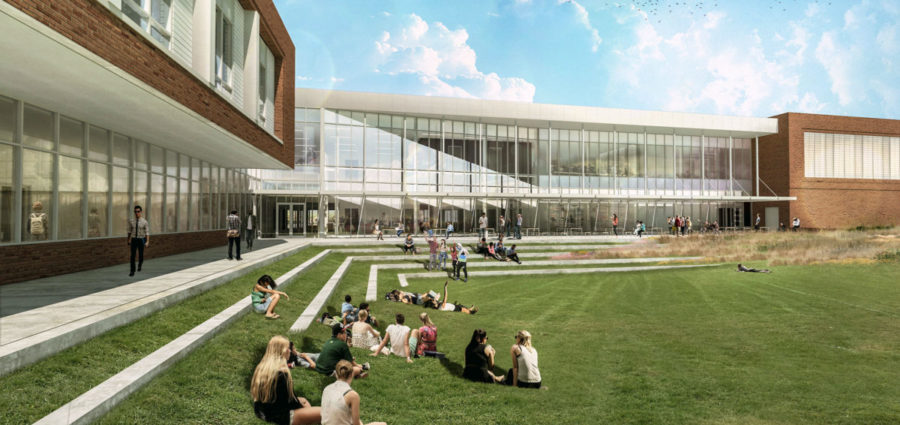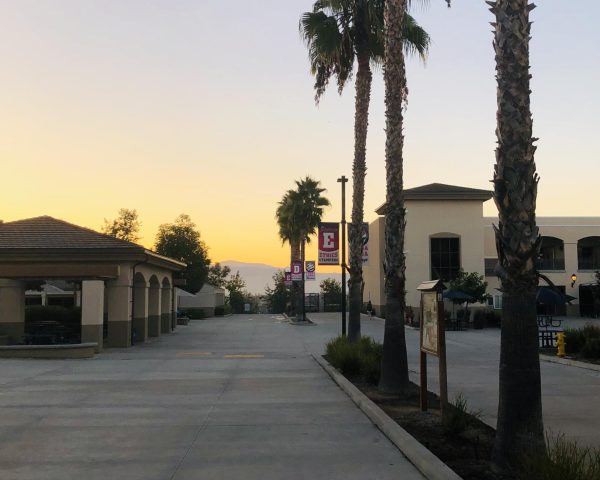Outdoor Campuses: Are They Worth It?
There are many pros and cons to outdoor campuses.
January 24, 2023
Depending on where one lives, campus life can differ greatly. Fundamentally, whether a school’s structure is indoors or outdoors depends on climate and environmental conditions.
For example, our school and many other schools within the state have outdoor campuses. This is largely due to California’s consistently warm temperatures and dry weather. As our state does not receive much rain or snow, conditional exceptions being the mountainous regions and northern area of the state, the constant threat of the elements does not majorly hinder daily procedures. Many schools throughout the East coast, where more states experience four-season weather, require indoor facilities due to heavy snow, freezing temperatures, and rain. Although the golden state does suffer from fires, winds, and earthquakes, they do not occur enough in proximity to or severity for schools to be considered enough of a motive for indoor campuses.
Another reason for outdoor campuses is maintenance costs. According to a user on Quora, “concrete walkways are much easier and cheaper to maintain than inside corridors.” Seeing as California is one of the largest and most populated states in the U.S., it is no surprise that public schools would try to reduce expenses in as many ways as possible. It’s a beautiful day outside—why not enjoy it? With year-long sunny weather, it does not seem entirely illogical for the education system to take advantage of the pleasant climate California has to offer.
However, despite their appearances, outdoor campuses are not all sunshine and rainbows. While minimal, the elements are still at work; arid climate, extreme heat, burning UV rays, pollen galore, vegetation, and more are bountiful. Berries, leaves, and branches litter the ground daily in mounds, while allergy-afflicted individuals sneeze and cough through puffy faces. This can make getting through the day difficult, with some students needing to retire home early due to their symptoms. Cleaning and maintaining the grounds is also laborious, as the natural waste from plants continues to grow. When the winter and rainy seasons do strike, hoards of students find themselves shivering and soaked, struggling to find refuge on campus. Oftentimes, many crowd the hallways and spaces beneath any coverings in order to stay dry. Not to mention, all sorts of creatures run rampant—rodents, birds, insects, racoons, you name it. Raiding trash cans and classrooms for food, easy access for these pests has caused a number of problems. Naturally, deceased possums are unsightly and unsanitary. Gigantic green-blue beetles zoom at the velocity of race cars throughout lunch and break times, evoking fear in those who come into close contact.
If it’s raining or really hot, students can find shelter inside.
— Norah Li (12)
Of course, there are some benefits to outdoor campuses, especially in the time of the COVID-19 pandemic. Students can self-distance easier, and walkways are naturally aired out. Sometimes, it is simply nice to get a fresh breath of air or enjoy the outdoors after hours in stuffy and humid classrooms. Still, some students prefer the conditioned and regulated environment of indoor campuses (myself included). Norah Li (12) prefers “indoor schools, because if it’s raining or really hot students can find shelter inside and don’t need to walk out in the open.” Overall, as someone who has grown up attending schools with all-indoor campuses in the Washington D.C. area, I can say that the atmosphere is favorable in non-environmental aspects as well. Possible bias aside, I feel that indoor campuses provide a sense of coziness and enhanced focus, as there are no distractions from the outdoors unless near a window. Furthermore, it is pleasant to not worry about the elements throughout the school day.
Everyone has their own personal preferences, but indoor campuses may prove to be more efficient and enjoyable for students and staff alike.














































Emma Safari • Mar 9, 2023 at 7:22 AM
I agree! There are both advantages and disadvantages to an outdoor campus. Although it’s usually sunny and warm in Yorba Linda, I think more recently–because of the weather–we’ve been seeing a lot more disadvantages. Great article!
Megan Wang • Mar 2, 2023 at 7:36 AM
I really enjoyed reading this article. I found that there were many pros and cons about outdoor schools and recently this winter I really wished we had an Indoor Campus. Thanks for writing this article 🙂